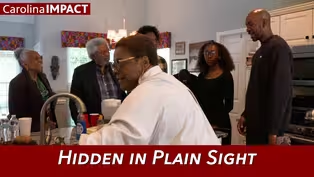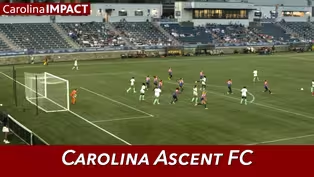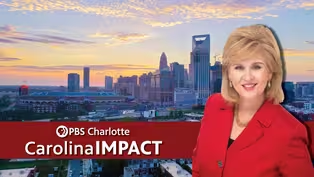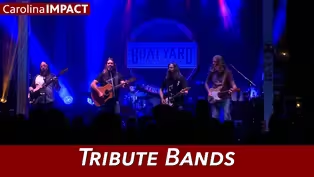
Experience Anatomy
Clip: Season 12 Episode 1209 | 4m 41sVideo has Closed Captions
Experience Anatomy offers hands-on anatomical education and training
Everyone's body is unique in its own way so when medical professionals such as doctors, clinicians, and first responders need hands on training or continuing education where can they go? One Charlotte business is offering a solution. Experience Anatomy provides actual donated human specimens to those in the medical field to learn procedures, practice techniques, and save lives.
Problems playing video? | Closed Captioning Feedback
Problems playing video? | Closed Captioning Feedback
Carolina Impact is a local public television program presented by PBS Charlotte

Experience Anatomy
Clip: Season 12 Episode 1209 | 4m 41sVideo has Closed Captions
Everyone's body is unique in its own way so when medical professionals such as doctors, clinicians, and first responders need hands on training or continuing education where can they go? One Charlotte business is offering a solution. Experience Anatomy provides actual donated human specimens to those in the medical field to learn procedures, practice techniques, and save lives.
Problems playing video? | Closed Captioning Feedback
How to Watch Carolina Impact
Carolina Impact is available to stream on pbs.org and the free PBS App, available on iPhone, Apple TV, Android TV, Android smartphones, Amazon Fire TV, Amazon Fire Tablet, Roku, Samsung Smart TV, and Vizio.
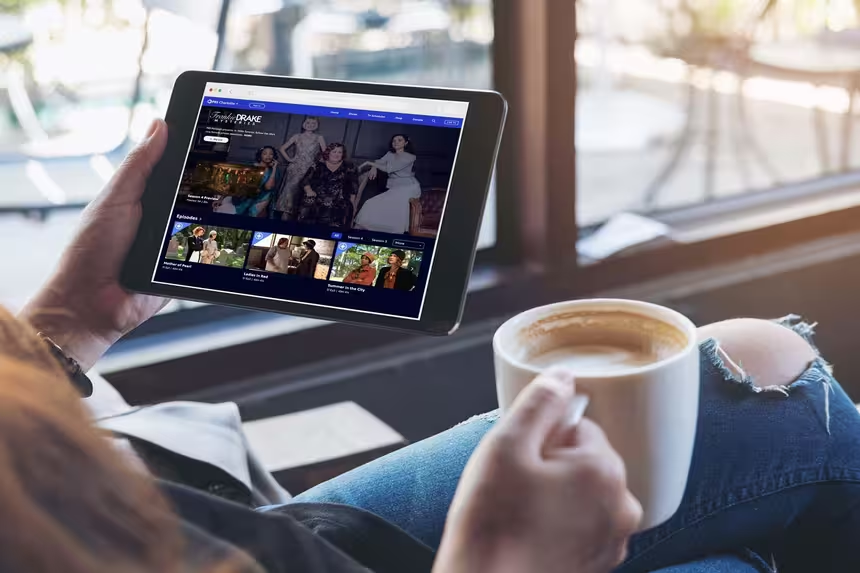
Introducing PBS Charlotte Passport
Now you can stream more of your favorite PBS shows including Masterpiece, NOVA, Nature, Great British Baking Show and many more — online and in the PBS Video app.Providing Support for PBS.org
Learn Moreabout PBS online sponsorship(bright music) - [Jamie] Dignity and respect is the foundation.
- [Instructor] So now we can go ahead and lock in our correction.
- [Jamie] We think it's important for people to know what we do and to kind of pull back the curtains behind this type of education.
(drill whirring) It's not just doctors who need to know how their body works.
I think it's important for the average person to understand that too, to take care of themselves, to take care of their loved ones, to communicate with their doctors.
- Mostly what we do is function as a bioskills lab.
And so, as a bioskills lab, as the name implies, folks are learning life science skills.
And so, that means doctors getting additional education, either practicing a new surgical technique, maybe practicing how to install and remove new devices, technologies are increasing, and then you have to meet the education to those new technologies as they come out.
(gentle music) - When we think of what modern medicine is today, it does not happen without whole body donation.
We think of some of these high tech surgeries that are taking place, robotic surgeries, these unbelievable transplants that go on today.
- As donors come in whole, oftentimes we'll segment donors into parts to be used for different programs based on the the need and the timing of the death.
Once all programming is complete, those parts all return into our care, and the donor is kind of made back whole.
And so, the cremation process happens on the entire donor, which is then returned to the family.
We have a wide variety of people that we cater to from first responders, like EMTs and firefighters, all the way up through practicing clinicians and a lot of things in between, whether it's acupuncture, chiropractic, massage therapists, yoga instructors, we've had artists come in, medical illustrators.
- So you're looking at the esophagus, is that what we wanna look and see and do?
We're running a cadaver lab in our training room here at the headquarters for Cabarrus County EMS.
It allows us to bring in our employees and EMS students to come through here and practice some of the high risk, low frequency skills.
- The training is effective on the cadaver, 'cause we wanna make it as real as possible.
So having those and the different anatomies that they bring is very effective.
- [Jamie] Even something as simple as injection, they wanna make sure they're accurate and that it's done correctly.
Every single body is different, right?
And so the size, location, the approximation of these different structures, docs need to be exceptionally clear on.
- I can put a traction splint on a mannequin and see how the application works, but cadavers give us an opportunity to see internally.
- So the first step is to get another first responder on scene to apply manual traction.
When you get a broken femur, the muscle will actually pull the bones kinda in that position, and so when we apply the traction splint we can actually pull it back, and it brings the pain level down a lot for the patient.
So it's a great tool, and we were able to demonstrate that today and actually show the broken femur and how it actually pulls traction and separates that bone so that it does that for the patient.
When I came to the Cabarrus County EMS, they used what they call an air track here.
Never touched one before, and so the first time that I ever got to really use the air track and figure out the tricks of the trade was on a cadaver, and it made that extremely helpful.
- Take a surgeon for example, I want them to be able to practice that surgery many times before they do it on me.
(bright music) We think that the holistic experience is really important to know your donors and your donor families and gives you the opportunity to match them better with educators and researchers.
And so, it allows us to better match and see what the donor and the family's wishes are, understand what the educators or the learners experience needs to be and match those together.
- We return to the family, when everything is said and done, is cremated remains.
I deal with families to where the decision for whole body donation is a financial decision, 'cause we're able to, in an extent, offer a free cremation in that situation with whole body donation.
- It's an alternative to a traditional funeral that not a lot of people even know exists.
And so, we wanna educate people on the opportunity to donate whole body and how that impacts their community.
- We do go back through and summarize what programming the individual was part of.
That one donor can change the lives when we think over time of hundreds, if not thousands of people.
Video has Closed Captions
Clip: S12 Ep1209 | 6m 28s | Two brothers adopted by different families use their discovery to inspire others. (6m 28s)
Video has Closed Captions
Clip: S12 Ep1209 | 5m 15s | Inside Carolina Ascent, Charlotte’s first top-tier women’s soccer team. (5m 15s)
December 10th, 2024 | Carolina Impact
Preview: S12 Ep1209 | 30s | Hidden In Plain Sight, Carolina Ascent FC, Experience Anatomy, & Tribute Bands. (30s)
Video has Closed Captions
Clip: S12 Ep1209 | 6m 31s | The stories behind two of the area's most popular Tribute Bands. (6m 31s)
Providing Support for PBS.org
Learn Moreabout PBS online sponsorship
- News and Public Affairs

Top journalists deliver compelling original analysis of the hour's headlines.

- News and Public Affairs

FRONTLINE is investigative journalism that questions, explains and changes our world.












Support for PBS provided by:
Carolina Impact is a local public television program presented by PBS Charlotte
